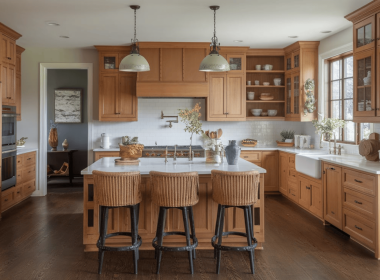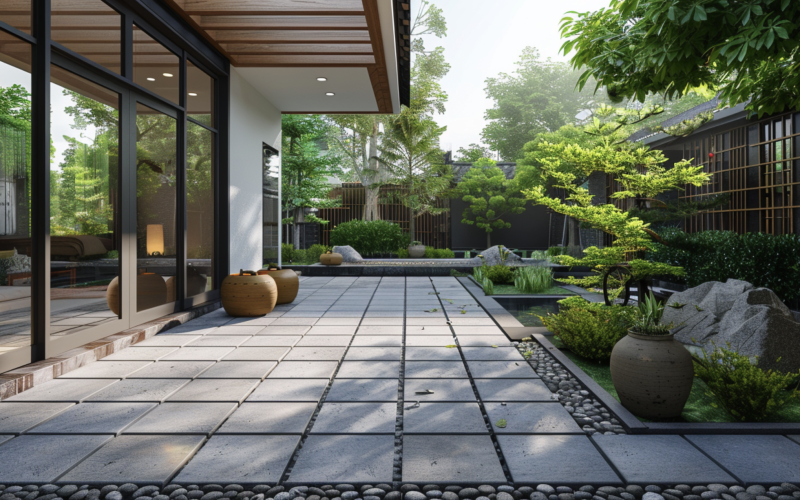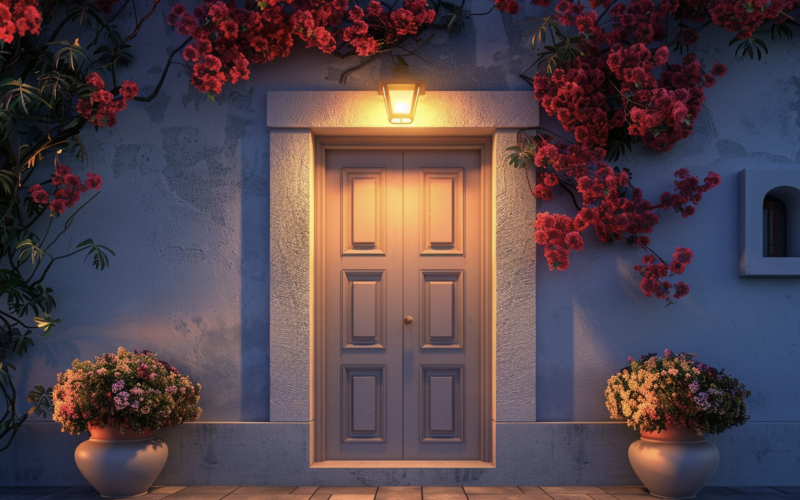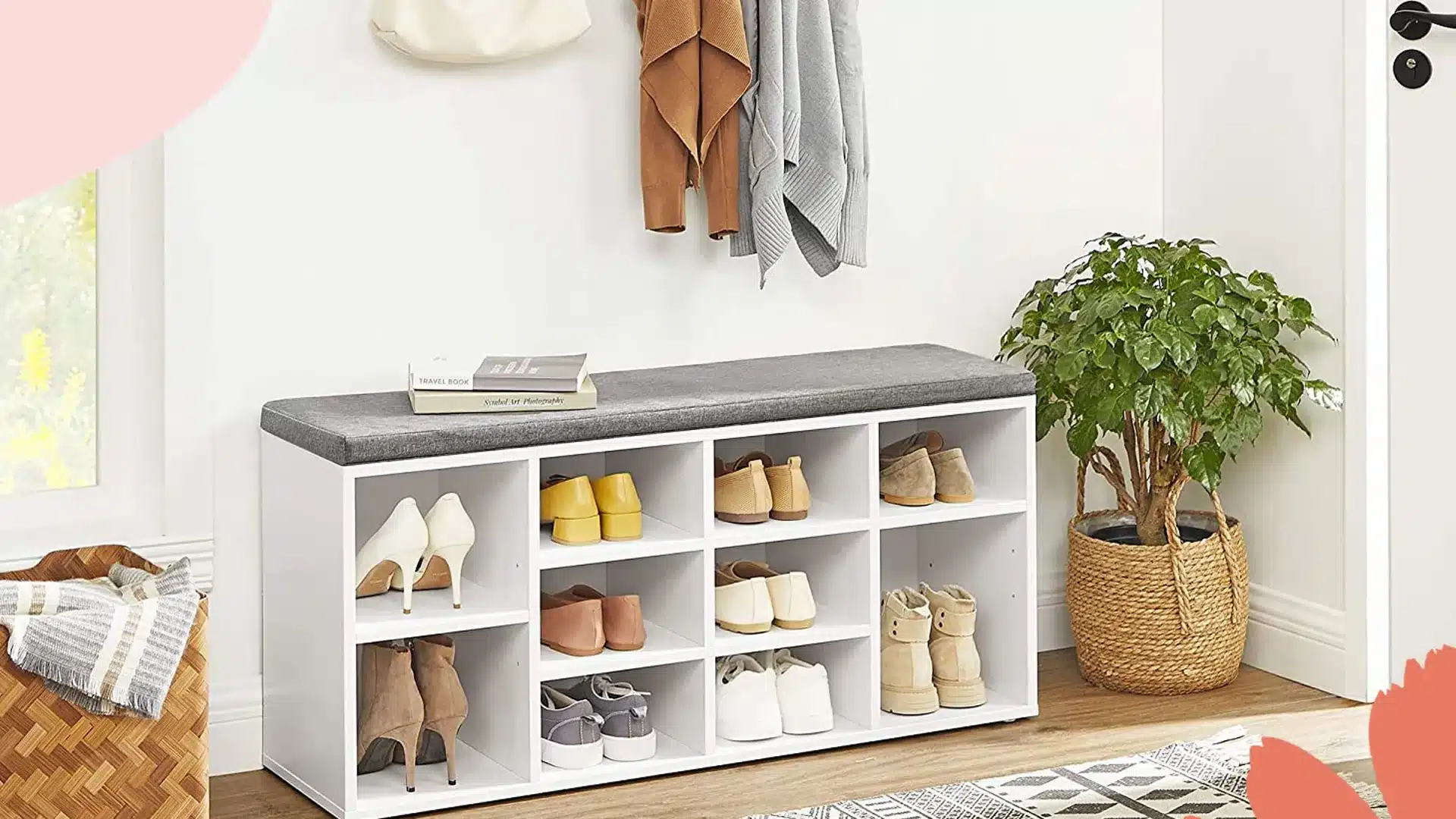When planning an outdoor space, many homeowners wonder if a cement patio is cheaper than a pavers.
It’s a common question, especially for those looking to create an inexpensive patio cover ideas area without breaking the bank.
The cost difference between cement and pavers can be significant, affecting both your budget and the final look of your outdoor living space.
In this post, we promise to explain the costs and benefits of cement patios and pavers, helping you make an informed decision about your home.
This article will compare both options’ installation costs, long-term maintenance expenses, and durability factors.
We’ll also examine how each choice can impact your property’s value and aesthetic appeal.
Initial Costs Comparison
1. Cement Patios
- Price range: $4 to $15 per square foot
- For a 100 sq ft patio: $400 to $1,500
2. Pavers
- Price range: $6 to $30 per square foot
- For a 100 sq ft patio: $600 to $3,000
Cement patios are typically cheaper upfront than pavers.
Basic cement is the lowest-cost option at $4 per square foot. The price ranges for high-end cement and basic pavers overlap.
Final costs depend on specific materials and design choices. These figures are just initial costs – long-term factors like maintenance also matter.
It’s clear that while cement is usually cheaper, the costs can vary depending on my choices.
Factors Influencing the Cost of Both
1. Cement Patios
Basic options: Gray concrete is the most affordable choice, saving homeowners money by keeping it simple.
Cost-increasing features: Adding color to the mix, texturing the surface, or stamping patterns into the concrete can enhance the patio’s appearance.
However, each of these options comes with a higher price tag.
2. Pavers
Material choices: Concrete pavers are usually the least expensive, brick pavers fall in the middle range, and natural stone pavers are often the priciest option.
Design factors: Design factors also impact the overall cost of a paver patio. Larger sizes require more materials and labor, increasing the total price.
Complex patterns or layouts drive labor costs, while custom cuts for unique designs add to the expense.
Basic designs are more budget-friendly for both cement patios and pavers.
However, investing in additional features or higher-quality materials can enhance the outdoor space’s appearance.
Durability: Cement Patios vs Pavers
Cement Patios
Cement patios are known for their durability. However, they can be prone to cracking in cold weather.
This happens because cement expands and contracts with temperature changes.
The material’s lower ASTM compressive strength than pavers makes it more vulnerable to these issues.
Pavers
Pavers often outperform cement in terms of durability. Their higher compressive strength means they’re less likely to crack under pressure or temperature changes.
The interlocking design of pavers allows for some flexibility, helping them withstand ground movement without breaking.
This feature adds to their overall durability and longevity.
In the long run, pavers tend to hold up better against the elements and daily wear and tear. This makes them a solid choice for homeowners looking for a long-lasting patio solution.
Maintenance and Repairs
Cement Patios
Cement patios can be tricky to maintain and fix. When damage occurs, it’s often difficult and costly to repair.
Fixing a cement patio often means replacing the entire affected area. This can be a big job that takes time and money.
Pavers
Pavers have an edge when it comes to maintenance and repairs.
If a paver gets damaged, it’s usually easy to fix. You can often replace just the affected paver without redoing the whole patio.
This makes repairs quicker, easier, and less expensive than cement patio fixing.
With pavers, you can achieve looks ranging from classic to modern.
Whether you want a uniform appearance or a mix of colors and textures, pavers provide more design possibilities, making them a popular choice for those who prioritize the visual aspect of their patio.
Comparing Aesthetics and Design Options
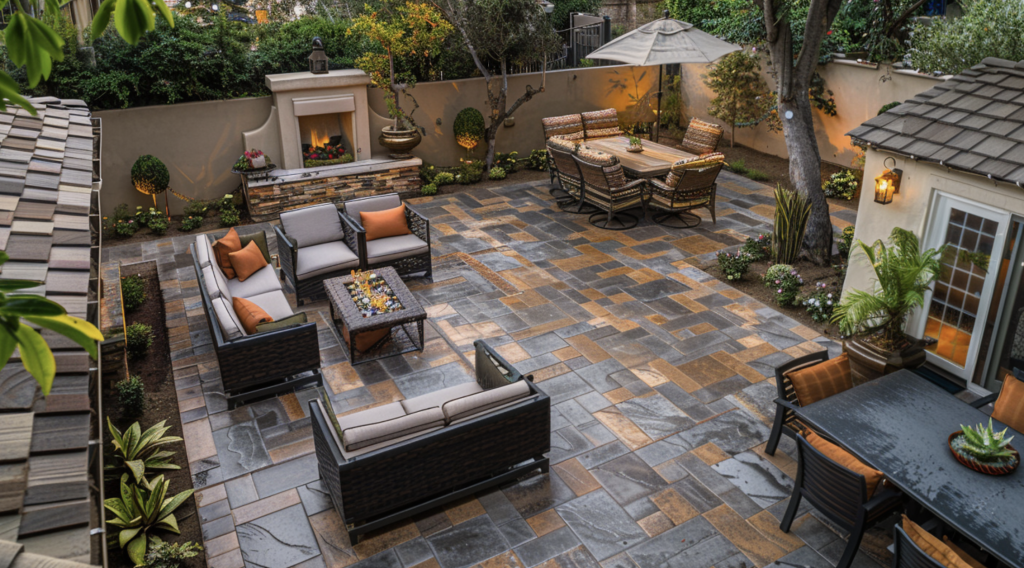
Cement Patios
Cement patios can be dressed up in various ways. They can be stamped and colored to look like other materials, which adds to their appeal.
However, the design options for cement patios are somewhat limited compared to pavers.
Pavers
Pavers shine in the area of aesthetics and design.
They come in a wide range of colors, shapes, and sizes. This variety allows for customizable patterns and designs, allowing homeowners to create a unique look for their outdoor space.
With pavers, it’s easier to match or complement the style of your home.
Contrasting Longevity and Resale Value
Cement Patios
Cement patios might have a shorter lifespan due to their tendency to crack over time.
While they can add value to your property, they may need more frequent repairs. This could mean extra costs down the line.
Pavers
Pavers often last longer and keep their good looks over time. They’re less likely to crack, which means less maintenance.
Pavers can boost your property value because they look nice and last long.
Many homebuyers find paver patios attractive, which could be a plus if you sell your home.
This combination of longevity and aesthetic appeal makes pavers a solid investment for many homeowners.
Conclusion
As we conclude our comparison of cement patios and pavers, it’s clear that both options have merits.
Cement patios offer a lower initial cost and can be a good choice for those on a tight budget. However, pavers stand out in terms of durability, ease of repair, and design flexibility.
While cement patios might seem cheaper initially, the long-term maintenance and potential repair costs should be considered.
Despite a higher upfront cost, Pavers often prove more cost-effective over time due to their longevity and ease of replacement.
Ultimately, your choice depends on your needs, budget, and aesthetic preferences. Consider factors like climate, intended use, and desired look when deciding.
Whether you opt for the simplicity of cement or the versatility of pavers, both can create a beautiful outdoor space for your home.
Frequently Asked Questions
How Long Do Cement Patios and Pavers Typically Last?
With proper care, cement patios can last 20-30 years. Due to their unit design and higher durability, Paved Patios often last 50+ years.
How Soon Can I Use My Patio After Installation?
Cement patios need about seven days to cure fully. Paver patios can be used immediately after installation, which is a big advantage.
Are There Eco-Friendly Options for Both Cement Patios and Pavers?
Yes. Pervious concrete is available for patios, while permeable pavers allow water to drain. Both can help with water management.




